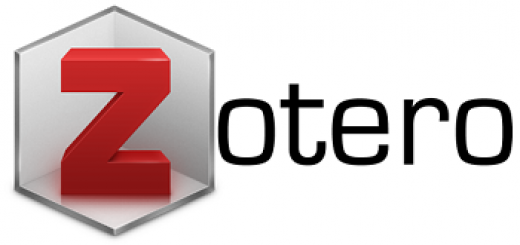THE 2024 INDONESIAN PRESIDENTIAL CANDIDATES’ DEBATE: RHETORICAL AND POSITIVE DISCOURSE ANALYSES
Abstract
Keywords
Full Text:
PDFReferences
Agustín, Ó. G. (2012). Enhancing Solidarity: Discourses of Voluntary Organizations on Immigration and Integration in Multicultural Societies. Journal of Multicultural Discourses, 7(1), 81–97. https://doi.org/10.1080/17447143.2011.570344
Baral, R. K., Bhusal, P. C., & Paudel, S. (2024). Climate Crisis Literacy Through Media: A Positive Discourse Analysis of Selected Nepali Media Content. Cogent Arts & Humanities, 11(1), 2316416.
Boyd, R. L., Blackburn, K. G., & Pennebaker, J. W. (2020). The Narrative Arc: Revealing Core Narrative Structures Through Text Analysis. Science Advances, 6(32), 1-9, 10.1126/sciadv.aba2196 .
Bullock, J. G. (2011). Elite Influence on Public Opinion in an Informed Electorate. American Political Science Review, 105(3), 496–515, https://doi.org/10.1017/S0003055411000165
Cho, J., & Ha, Y. (2012). On The Communicative Underpinnings of Campaign Effects: Presidential Debates, Citizen Communication, and Polarization in Evaluations of Candidates. Political Communication, 29(2), 184–204, https://doi.org/10.1080/10584609.2012.671233.
Freire, P. (2020). Toward a sociology of education .. Routledge. (Original work published 1978)
Holbert, R. L. (2005). Debate Viewing as Mediator and Partisan Reinforcement in the Relationship Between News Use and Vote Choice. Journal of Communication, 55(1), 85–102, https://doi.org/10.1111/j.1460-2466.2005.tb02660.x.
Hughes, J. M. F. (2018). Progressing Positive Discourse Analysis and/in Critical Discourse Studies: Reconstructing Resistance Through Progressive Discourse Analysis. Critical Discourse Studies and/in Communication, 18(3), 193-211, https://doi.org/10.1080/15358593.2018.1479880.
Husain, A., Hamamah, H., & Nurhayani, I. (2020). Commissive Speech Act in Indonesian Presidential Debate. OKARA: Jurnal Bahasa Dan Sastra, 14(1), 81–98. https://doi.org/10.19105/ojbs.v14i1.3141.
Jahn, M. (2021). Narratology 2.3: A guide to the theory of narrative. (pp. 1-98). English Department, University of Cologne.
Kamhar, M. Y., Laksono, K., Mulyono, M., & Suhartono, S. (2024). Impoliteness in The 2024 Indonesian Presidential and Vice Presidential Candidate Debate: Sociopragmatic Study. (ICONITIES): The International Conference on Islamic Civilization and Humanities, 2(unknown issue number), 848–860. https://proceedings.uinsa.ac.id/index.php/iconfahum/article/view/1835/1303.
Kendall, S. (1998). Health and empowerment: Research and practice. CRC Press.
Martani, F. T., Muryati, S., & Wahyuni, T. (2019). Pemakaian Gaya Bahasa Perbandingan pada Lirik Lagu-lagu Grup Musik Dewa 19 dalam Album Kerajaan Cinta. Klitika: Jurnal Ilmiah Pendidikan Bahasa Dan Sastra Indonesia, 1(2), 78-95, https://doi.org/10.32585/klitika.v1i2.474.
Martin, J. R. (2004). Positive Discourse Analysis: Solidarity and Change. Revista Canaria de Estudios Ingleses, 49(1), 179–200. https://riull.ull.es/xmlui/bitstream/handle/915/29390/RECEI%2049_%282004%29_11.pdf?sequence=1
McKinney, M. S., & Warner, B. R. (2013). Do Presidential Debates Matter? Examining a Decade of Campaign Debate Effects. Argumentation and Advocacy, 49(4), 238–258. https://doi.org/10.1080/00028533.2013.11821800.
Melinda, P., Sitepu, S. A., Ginting, M. T. B., & Ritonga, A. T. (2024). Impoliteness in the Final 2024 Indonesian Presidential Debate: Critical Discourse Analysis. Jurnal Intelek Insan Cendikia, 1(4), 831–843. https://jicnusantara.com/index.php/jiic/article/view/542/610.
Mubarak, A. S., Mun'im, M. F. A. (2023). Empowerment in TD Jakes’ Motivational Discourse" Courage “: A Positive Discourse Analysis. Texas Journal of Multidisciplinary Studies, 17(unknown number of issue), 80–86. https://zienjournals.com/index.php/tjm/article/view/3450.
Mullinix, K. J. (2015). Presidential Debates, Partisan Motivations, and Political Interest. Presidential Studies Quarterly, 45(2), 270–288, https://doi.org/10.1111/psq.12187.
Nartey, M. (2020). Voice, agency and identity: A Positive Discourse Analysis of ‘Resistance’in the Rhetoric of Kwame Nkrumah. Language and Intercultural Communication, 20(2), 193–205, https://doi.org/10.1080/14708477.2020.1722686.
Nartey, M. & Ernanda. (2020). Formulating Emancipatory Discourses and Reconstructing Resistance: A Positive Discourse Analysis of Sukarno’s Speech at the First Afro-Asian Conference. Critical Discourse Studies, 17(1), 22–38, https://doi.org/10.1080/17405904.2019.1617758.
Rappaport, J. (1987). Terms of Empowerment/Exemplars of Prevention: Toward a Theory for Community Psychology. American Journal of Community Psychology, 15(2), 121–148, 10.1007/BF00919275.
Rigotti, E., & Morasso, S. G. (2009). Argumentation as an object of interest and as a social and cultural resource. In N. Muller Mirza & A.-N. Perret-Clermont (Eds.), Argumentation and Education: Theoretical Foundations and Practices, 9–66. Springer. https://doi.org/10.1007/978-0-387-98125-
Searle, J. R. (1976). A Classification of Illocutionary Acts1. Language in Society, 5(1), 1–23, 10.1017/S0047404500006837.
Simanjuntak, H. M., & Simatupang, E. C. (2024). Impoliteness Strategies In The Third Indonesia Presidential Debate 2024: Pragmatics Research. Jurnal Onoma: Pendidikan, Bahasa, Dan Sastra, 10(3), 3064–3073, https://doi.org/10.30605/onoma.v10i3.4080.
Slothuus, R., & Bisgaard, M. (2020). How Political Parties Shape Public Opinion in the Real World. American Journal of Political Science, 65(4), 896–911, https://doi.org/10.1111/ajps.12550.
Su, T. (2016). Positive Discourse Analysis of Xi Jinping’s Speech at the National University of Singapore under Appraisal Theory. Journal of Language Teaching and Research, 7(4), 796-801, http://dx.doi.org/10.17507/jltr.0704.22.
Sun, Y., Kalinin, O. I., & Ignatenko, A. V. (2021). The Use of Metaphor Power Indices For the Analysis of Speech Impact in Political Public Speeches. Russian Journal of Linguistics, 25(1), 250–277, https://doi.org/10.22363/2687-0088-2021-25-1-250-277.
Ulum, M., Sutopo, D., & Warsono, W. (2018). A Comparison Between Trump’s and Clinton’s Commissive Speech Act in American Presidential Campaign Speech. English Education Journal, 8(2), 221–228, https://doi.org/10.15294/eej.v8i3.21391.
Eemeren, F. H. V. (1999). Strategic Maneuvering in Argumentative Discourse. Discourse Studies, 1(4), 479-497, 10.1177/1461445699001004005.
Eemeren, F. H. V. (2016). Identifying Argumentative Patterns: A Vital Step in the Development of Pragma-Dialectics. Argumentation, 30(1), 1–23, 10.1007/s10503-015-9377-z.
Eemeren, F. H. V., & Grootendorst, R. (2004). A systematic theory of argumentation: The pragma-dialectical approach. Cambridge University Press.
https://doi.org/10.1017/CBO9780511616389
Warner, B. R., McKinney, M. S., Bramlett, J. C., Jennings, F. J., & Funk, M. E. (2020). Reconsidering Partisanship as a Constraint on the Persuasive Effects of Debates. Communication Monographs, 87(2), 137–157, https://doi.org/10.1080/03637751.2019.1641731.
Witianti, S., & Solihah, R. (2019). The Influence of Public Debate on the Political Preference of Communities in the Presidential Election in 2019. Central European Journal of International & Security Studies, 13(4), 368-380, https://cejiss.org/images/issue_articles/2019-volume-13-issue-4/22-the-influence-of-public-debate-on-the-political-preference-of-communities-in-the-presidential-election-in-2019.pdf.
Zhang, Y. (2017). Transitivity Analysis of Hillary Clinton’s and Donald Trump’s First Television Debate. International Journal of Applied Linguistics and English Literature, 6(7), 65–72, https://doi.org/10.7575/aiac.ijalel.v.6n.7p.65.
Zhu, C. (2021). Metaphors Trump Lives by: A Critical Metaphor Analysis of Trump’s Statements in 2020 Presidential Election Debates. International Journal of English Linguistics, 11(2), 150–162, 10.5539/ijel.v11n2p150.
DOI: https://doi.org/10.18860/ling.v19i2.28921
Copyright (c) 2024 LiNGUA: Jurnal Ilmu Bahasa dan Sastra

This work is licensed under a Creative Commons Attribution-ShareAlike 4.0 International License.
Member of:
Indexed by:
Editorial Office:
Laboratory of Information and Publication, Faculty of Humanities
Universitas Islam Negeri Maulana Malik Ibrahim Malang
Jalan Gajayana 50 Malang, Jawa Timur, Indonesia 65144
Email: jurnallingua@gmail.com
Phone: +62 (0)341 570872

LiNGUA by Laboratory of Information and Publication, Faculty of Humanities is licensed under a Creative Commons Attribution-ShareAlike 4.0 International License.
Based on a work at http://ejournal.uin-malang.ac.id/index.php/humbud/index.






